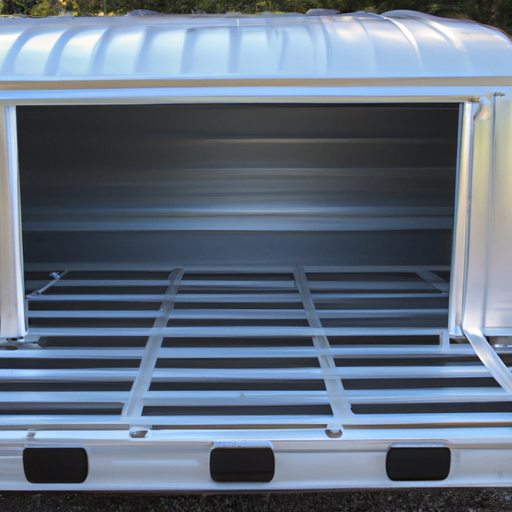
Are you in need of transporting chickens safely but not sure the best way to do so? Whether it’s for a trip to the countryside or a visit to the vet, ensuring the well-being of your feathered friends during transportation is paramount. Luckily, there are various methods and precautions you can take to guarantee a stress-free journey for your chickens. From the right type of carrier to creating a comfortable environment, this article will guide you through the best practices for safely transporting chickens. So, let’s explore the most effective ways to make your chickens’ travel as smooth as possible.

Choosing a Suitable Transportation Method
Considerations for Transportation
When it comes to transporting chickens, there are several important factors to consider. Firstly, think about the distance you will be traveling and the duration of the journey. This will help determine the most suitable transportation method. Additionally, consider the number of chickens you will be transporting and whether you are moving them for a short distance or long-distance. The size, weight, and age of the chickens are also crucial factors to take into account. Finally, ensure you are familiar with any legal regulations or requirements regarding the transportation of chickens in your area.
Options for Transportation Methods
There are various transportation methods available for safely transporting chickens. Some of the most common options include using a car or truck, a dedicated poultry transport trailer, or even a pet carrier. The chosen method will depend on the number of chickens, the distance of the journey, and your personal preferences. It’s important to select a method that provides adequate space, ventilation, and protection for the chickens.
Comparison of Various Transportation Methods
To determine the most suitable transportation method, it’s essential to compare the advantages and disadvantages of each option. Using a car or truck may be convenient for shorter distances, especially if you have a small number of chickens. However, if you’re transporting a larger flock or traveling longer distances, a dedicated poultry transport trailer might be a better choice. Pet carriers can be suitable for transporting a small number of chickens, but it’s important to ensure they provide enough ventilation and security. Consider the specific needs of your chickens and the logistics of the journey when deciding on the transportation method.
Preparing the Chickens for Transport
Health and Safety Checks
Before embarking on a journey with your chickens, it’s vital to conduct thorough health and safety checks. Examine each chicken individually, looking for any signs of illness or injury. Check their feathers, eyes, beak, and legs for any abnormalities. Additionally, ensure that the chickens are up to date with their vaccinations and have been treated for parasites if necessary. Handling healthy and disease-free birds will not only ensure their well-being during transport but also prevent the potential spread of illnesses to other flocks.
Feeding and Watering
Proper feeding and watering are crucial before and during transportation. Ensure that the chickens have access to clean and fresh water, as dehydration can be a serious issue during transport. The day before the journey, provide the chickens with a balanced meal to ensure they have enough energy for the trip. Avoid feeding them too close to departure time to minimize the chances of motion sickness. During longer journeys, consider providing small snacks or treats to keep the chickens content and hydrated.
Creating a Comfortable Environment
To ensure the comfort of the chickens during transportation, it’s important to create a suitable environment in their crates or carriers. Line the crates with fresh bedding material such as straw or wood shavings to provide cushioning and absorb any droppings. Ensure there is enough space for the chickens to move around comfortably without overcrowding. Consider covering the crates partially with a breathable material to provide shade and reduce stress levels during the journey. Creating a calm and comfortable environment will help minimize the chickens’ anxiety and ensure a smoother transport experience.
The Importance of Proper Crate Selection
Size and Type of Crate
Choosing the right crate size and type is essential for the well-being of the chickens during transportation. The crate should be spacious enough to allow the birds to stand, turn around, and stretch their wings comfortably. At the same time, it should not be excessively large, as excessive space can result in injury or stress during travel. Additionally, opt for crates with solid and sturdy construction to provide adequate protection and prevent injuries.
Ensuring Adequate Ventilation
Proper ventilation in the crates is crucial to prevent heat stress and maintain good air quality for the chickens. Choose crates with sufficient openings or ventilation holes to allow fresh airflow. However, ensure that these openings are not too large, as they may pose a risk of injury or escape. Proper ventilation plays a significant role in regulating temperature, reducing humidity, and preventing respiratory issues during transportation.
Securely Fastening the Crate
To ensure the safety of the chickens and prevent any accidental openings or escapes during transportation, it’s important to securely fasten the crates. Double-check that all latches, locks, or fasteners are properly engaged before the journey begins. Use zip ties or additional fasteners if needed to provide extra security. Properly securing the crates will give you peace of mind and ensure that the chickens remain safe and contained throughout the journey.
Loading and Unloading the Chickens
Handling with Care
Loading and unloading chickens require gentle and careful handling to minimize stress and prevent injuries. Avoid grabbing or squeezing the birds, as this can lead to harm or distress. Instead, gently lift and support each chicken, keeping them close to your body to provide a sense of security. Avoid sudden movements or loud noises that could startle them. Taking the time to handle the chickens with care will not only ensure their well-being but also contribute to a smoother overall transport experience.
Minimizing Stress
Transporting chickens can be a stressful experience for them, so it’s crucial to minimize stress whenever possible. Keep the noise level low and avoid sudden changes in temperature or lighting conditions. Maintain a calm and quiet environment during loading and unloading to minimize anxiety. Additionally, try to keep the journey as smooth as possible, avoiding rough roads or sudden stops. By taking steps to minimize stress, you will help ensure the chickens’ well-being and make the transportation process more comfortable for them.
Managing Group Dynamics
If you are transporting multiple chickens, it’s important to consider their group dynamics and social hierarchy. Chickens have a pecking order, which can cause stress or aggression during transport. Avoid mixing incompatible or aggressive birds in the same crate to prevent injuries. If separate crates are not feasible, consider using dividers or barriers within the crate to create separate sections. By managing the group dynamics appropriately, you can minimize any potential conflicts and ensure a smoother journey for all the chickens.
Ensuring Safety and Comfort During Transport
Proper Placement of Crates
During transportation, it’s crucial to ensure the proper placement of the crates to maintain safety and comfort for the chickens. Secure the crates in the vehicle, ensuring they are stable and cannot shift or fall during the journey. Consider placing the crates on a nonslip surface to prevent sliding or tipping. Avoid exposing the crates directly to extreme temperatures or harsh weather conditions. By properly placing and securing the crates, you will help maintain a stable and comfortable environment for the chickens.
Maintaining Temperature Regulation
Maintaining appropriate temperature regulation is vital for the well-being of the chickens during transport. Chickens are sensitive to both heat and cold, so it’s important to monitor and adjust the temperature accordingly. During hot weather, ensure sufficient ventilation and provide shade to prevent overheating. In colder conditions, consider providing insulation or adding blankets to the crates to maintain warmth. Monitoring and regulating the temperature inside the crates will help prevent stress-induced health issues and ensure the chickens’ comfort.
Preventing Injuries and Accidents
Safety should always be a top priority during chicken transportation. Take precautions to prevent injuries and accidents by avoiding sudden stops, sharp turns, or excessive vibrations. Secure any loose objects or equipment in the vehicle to prevent them from falling and potentially harming the chickens. Additionally, check the crates regularly during transport to ensure that there are no loose latches or openings that could result in escapes or injuries. By taking preventative measures, you can significantly reduce the risk of accidents and injuries during transport.
Taking Precautions for Long-Distance Transport
Planning Breaks and Rest Stops
For long-distance journeys, it’s essential to plan regular breaks and rest stops for both the chickens and the transporters. Stop at designated intervals to give the birds a chance to stretch their legs, drink water, and rest. Ensure that the rest area is clean, safe, and free from potential risks. Additionally, use these breaks to monitor the chickens’ well-being and address any issues that may arise during the journey. Adequate breaks and rest periods will help reduce stress and fatigue for both the chickens and the transporters.
Monitoring and Attending to the Chickens
During long-distance transportation, it’s important to continually monitor the chickens’ well-being and attend to their needs. Check on their water supply regularly, ensuring it remains clean and accessible. Watch for any signs of distress, such as excessive panting, lethargy, or aggressive behavior. If necessary, make adjustments to the temperature or ventilation to maintain a comfortable environment. By closely monitoring the chickens throughout the journey, you can address any potential issues promptly and ensure their safety and comfort.
Emergency Preparedness
Before embarking on a long-distance journey, it’s crucial to be prepared for any unexpected emergencies that may arise. Carry a well-stocked first aid kit specifically designed for poultry emergencies. Familiarize yourself with basic chicken first aid procedures and be prepared to administer immediate care if needed. Additionally, have a contingency plan in place in case of vehicle breakdowns or unforeseen circumstances. By being prepared for emergencies, you can respond effectively and ensure the safety and well-being of the chickens during long-distance transport.
Understanding Legal Regulations and Requirements
Researching Local and National Laws
Transporting chickens may be subject to specific regulations and requirements set by local and national authorities. It is essential to research and familiarize yourself with these laws before transporting the birds. Look into any restrictions on travel routes, licensing, or permits needed for the transportation of poultry. By understanding and complying with relevant laws, you can avoid legal complications and ensure a smooth and lawful transport process.
Obtaining Permits and Certifications
In some cases, transporting chickens may require specific permits or certifications. These permits can range from health certificates to prove the birds are disease-free to special authorizations for crossing international borders. Research the requirements specific to your location and destination and obtain the necessary permits in advance. Make sure to comply with all documentation and paperwork necessary for legal transportation. By obtaining the proper permits and certifications, you can ensure a legal and hassle-free transport of your chickens.
Complying with Biosecurity Measures
Biosecurity measures are essential to prevent the spread of diseases and protect both your flock and other poultry populations. It’s crucial to comply with biosecurity guidelines when transporting chickens. These guidelines may include requirements such as disinfecting crates, restricting access to the transport area, or maintaining separation between different flocks. Familiarize yourself with the recommended biosecurity measures and ensure you adhere to them throughout the transportation process. By prioritizing biosecurity, you contribute to the overall health and well-being of the poultry industry.
Promoting Biosecurity during Transportation
Cleaning and Disinfecting Crates
To minimize the risk of disease transmission, it’s important to thoroughly clean and disinfect the crates used for chicken transportation. After each journey, remove any soiled bedding or droppings from the crates and wash them with a poultry-safe disinfectant. Pay extra attention to cleaning any potential areas where pathogens may accumulate, such as corners or crevices. Allow the crates to dry thoroughly before reusing them. By maintaining a clean and disinfected environment, you contribute to the biosecurity of your flock and prevent the spread of diseases.
Isolating and Quarantining New Birds
If you are transporting new chickens to your flock, it’s crucial to practice proper isolation and quarantine protocols. Isolate the new birds in separate crates or designated areas for a recommended period to observe and monitor their health. This isolation period helps identify any potential diseases or illnesses before introducing them to your existing flock. Preventing the transmission of diseases through isolation and quarantine protocols is a fundamental component of maintaining good poultry health.
Understanding Disease Prevention
Transportation can expose chickens to various stressors that weaken their immune systems and make them more susceptible to diseases. Understanding disease prevention measures is essential for safeguarding the health of your flock during transport. Ensure that the chickens are up to date with their vaccinations and boosters, as recommended by a poultry veterinarian. Implement biosecurity measures not only during transport but also in your everyday flock management practices. By prioritizing disease prevention, you can protect the health and well-being of your chickens throughout their journey and beyond.
Monitoring the Health and Well-being of Chickens
Frequent Visual Checks
Regular visual checks are crucial to monitor the overall health and well-being of the chickens during and after transportation. Observe each chicken individually for any signs of distress, injury, or illness. Look for abnormal behaviors, such as lethargy, excessive panting, or changes in appetite. Keep an eye on their posture and movement, ensuring they are comfortable and able to walk and stand properly. Frequent visual checks allow you to detect any potential issues promptly and take appropriate action.
Identifying Signs of Distress or Illness
Being able to identify signs of distress or illness in chickens is vital for their well-being. Common signs of distress include excessive vocalization, increased aggression, or excessive preening. Signs of illness can include abnormal droppings, respiratory issues, or changes in appetite or water consumption. Familiarize yourself with typical chicken behaviors and health indicators to effectively recognize any potential problems. Identify signs of distress or illness early on, and consult a veterinarian if necessary to ensure the chickens receive prompt and appropriate care.
Providing Veterinary Care as Needed
If any health issues or injuries are identified during or after transportation, it’s important to seek veterinary care promptly. Contact a poultry veterinarian who can assess the condition of the chickens and provide guidance for treatment. Be prepared to provide relevant information about the chickens’ transportation history and any noticeable changes in behavior or health. Prompt veterinary care can make a significant difference in the outcome for the affected birds and help prevent the spread of diseases within your flock.
Post-Transportation Care and Maintenance
Cleaning and Disinfecting Equipment
After completing a transportation journey, it’s crucial to clean and disinfect all equipment used during the process. Thoroughly clean and disinfect the crates, feeders, and waterers used, ensuring that any potential pathogens are eliminated. Dispose of any soiled bedding materials appropriately and clean all surfaces with poultry-safe disinfectants. Cleaning and disinfecting the equipment help maintain good biosecurity practices and reduce the risk of diseases entering your flock.
Observing Quarantine Periods
If the transported chickens are new additions to your flock, it’s essential to observe a quarantine period before introducing them to your existing birds. Isolate the newcomers in a separate area for a recommended period of time to monitor their health and prevent potential disease transmission. During this quarantine period, closely observe the chickens for any signs of illness or abnormalities. This precautionary measure minimizes the chances of introducing diseases or parasites into your established flock.
Preparing for Future Transportation Needs
Transporting chickens is not a one-time event; it may be necessary several times throughout the life of your flock. Therefore, it’s essential to prepare for future transportation needs. Take note of any lessons learned from previous journeys and make any necessary adjustments to your equipment or procedures. Regularly inspect and maintain the crates, ensuring they remain in good condition. Stay updated on current regulations and requirements regarding poultry transportation in your area. By preparing for future transportation needs, you’ll be well-equipped to ensure the safety, health, and well-being of your chickens whenever the need arises.
In conclusion, transporting chickens safely requires careful consideration and preparation. By selecting a suitable transportation method, preparing the chickens adequately, and following proper procedures throughout the journey, you can ensure their safety and well-being. Compliance with legal requirements, biosecurity measures, and proactive monitoring of the chickens’ health are crucial aspects of successful transportation. Remember to prioritize the welfare of your chickens at every step of the process and make adjustments as needed to improve future journeys. With proper care and attention, you can transport your chickens safely and maintain the health and productivity of your flock.







